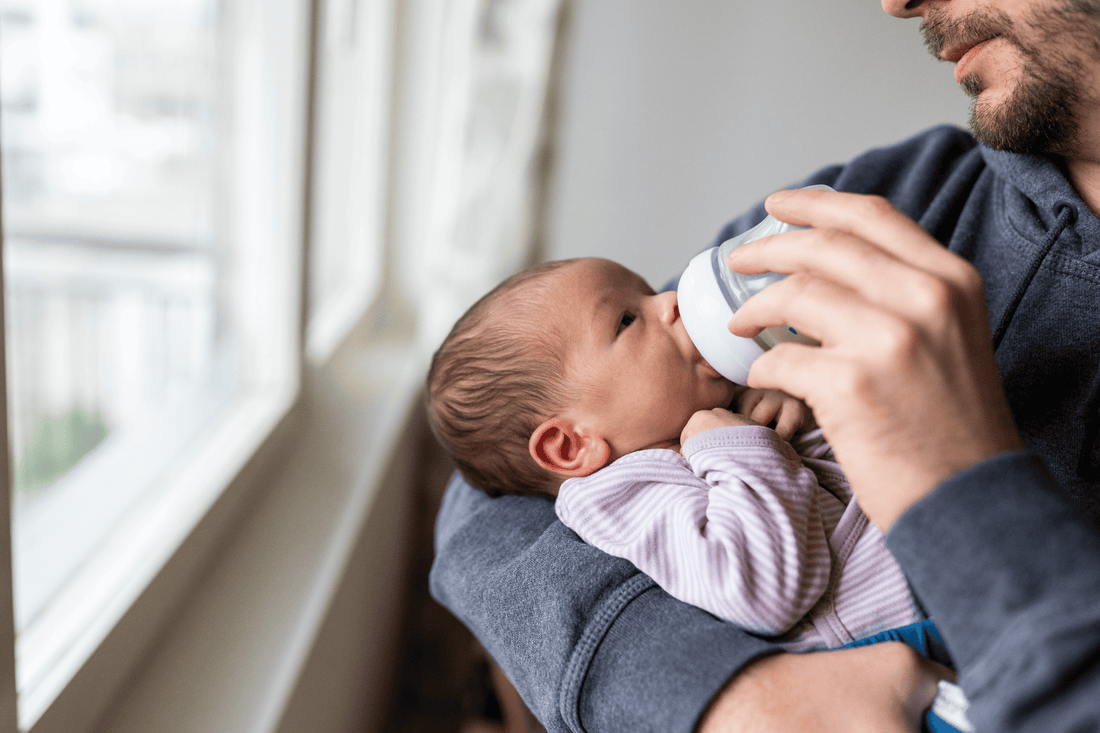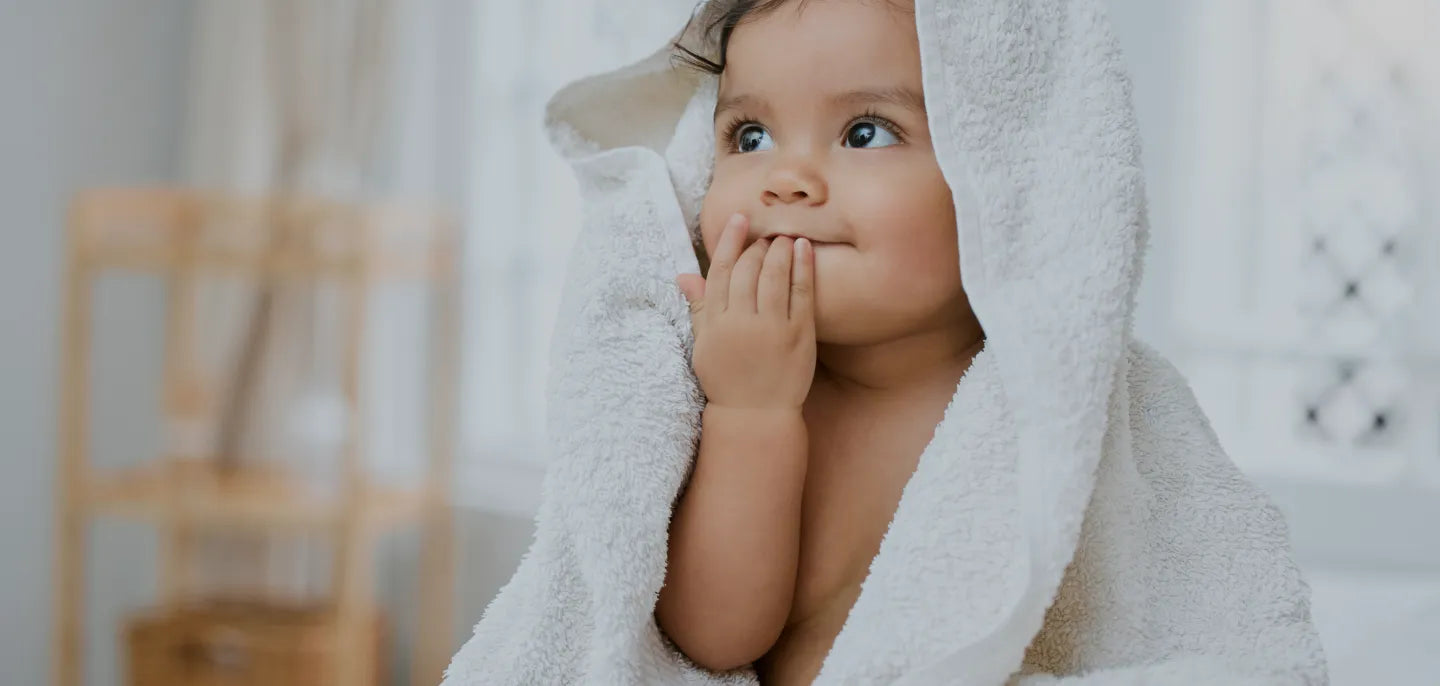How To Bottle Feed Your Newborn
Did you know bottle feeding can be just as nurturing as breastfeeding?
Welcoming a newborn is a life-changing experience filled with joy—and a few challenges. Deciding how to feed your baby is one of the most important choices you’ll make. If you’re considering bottle feeding, whether with formula or expressed breast milk, it’s natural to feel a little overwhelmed at first.
From selecting the right bottles and teats to mastering feeding techniques, there’s a lot to learn. Having the right tools and understanding best practices is essential for ensuring your baby’s safety, comfort, and nutrition.
Bottle feeding offers flexibility, shared bonding opportunities, and the peace of mind of knowing exactly how much your baby is consuming. With the right preparation, it can be a smooth and rewarding experience for your whole family.
Should I Start Bottle-Feeding My Baby?
Breastfeeding is often recommended as the exclusive feeding method for babies up to six months of age, as it provides numerous health benefits for both mother and child. Breast milk is uniquely tailored to meet your baby’s nutritional needs, strengthens their immune system, and fosters a strong emotional bond.
Breastfeeding isn’t always possible or preferred for every family. Whether due to medical conditions, lifestyle factors, or personal choice, bottle-feeding infant formula is a safe and effective alternative. You can bottle feed your baby with either infant formula or expressed breast milk, ensuring they receive the essential nutrients they need to grow and thrive.
When Bottle Feeding is Necessary
- Health or Medical Challenges: Certain conditions, such as low milk supply, latch difficulties, or maternal health issues, can make breastfeeding challenging.
- Allergies or Intolerances: Some babies have an intolerance or allergy to cow’s milk protein. In these cases, a pediatrician can recommend a suitable hypoallergenic or specialized formula.
- Lifestyle Needs: For parents returning to work or managing demanding schedules, bottle feeding provides flexibility without compromising your baby’s nutrition.
Before transitioning from breastfeeding to partial or exclusive bottle-feeding infant formula, it’s important to consult your pediatrician. They can provide guidance tailored to your baby’s specific nutritional needs, ensuring a smooth and healthy transition.
Why Bottle Feed?
Bottle feeding offers unique benefits for families, extending beyond nutrition:
- Flexibility: Bottle feeding allows parents to share feeding responsibilities, enabling partners, grandparents, or other caregivers to bond with the baby while ensuring mom gets rest or recovery time.
- Precise Monitoring: With bottle feeding, you can track exactly how much milk your baby consumes, giving peace of mind about their nutritional intake.
- Enhanced Bonding Opportunities: Holding your baby close during bottle feeding fosters a sense of security and comfort. Making eye contact, using a soothing tone, and offering gentle touch can strengthen emotional connections during these moments.
Whether you are supplementing breastfeeding or exclusively bottle feeding, the most important thing is to meet your baby’s nutritional and emotional needs in a way that works best for your family.
Benefits of Bottle Feeding with Infant Formula
Bottle feeding with infant formula offers unique advantages that support both parents and babies. Here are some key benefits:
- Bonding for Everyone: Bottle feeding allows all caregivers—dads, grandparents, and other family members—to share the joy of feeding and bonding with your baby. This shared responsibility nurtures closeness and creates cherished moments for everyone involved.
- Flexibility for Parents: A bottle integrates seamlessly into busy lifestyles. It’s especially valuable for mothers returning to work, families with demanding schedules, or when mom needs rest and recovery.
- Monitored Intake: With bottle feeding, parents can precisely track how much milk their baby is consuming, offering peace of mind about meeting nutritional needs. Knowing exactly how much your baby is drinking helps ensure they’re getting the right nutrition for healthy growth.
- Shared Responsibilities: Bottle feeding gives partners and other caregivers the opportunity to actively participate in feedings. This not only strengthens family bonds but also helps reduce the burden on mom.
For families looking for a premium infant formula, a2 Platinum® Premium Infant Formula is an excellent choice. Made with the unique A2 protein, it’s nutritionally complete with 30+ key nutrients to support growth and development.
Challenges of Bottle Feeding
While bottle feeding has many advantages, it’s important to be mindful of potential challenges:
- Preparation and Cleaning: Bottles, nipples, and accessories require daily cleaning and sterilization to ensure hygiene and safety. Preparing formula or pumping breast milk also takes planning and time.
- Missed Hormonal Benefits: Breastfeeding triggers the release of hormones that promote relaxation and bonding. Although bottle feeding doesn’t replicate this completely, you can create meaningful connections through eye contact, gentle touch, and nurturing interactions during feedings.
- Risk of Ear and Tooth Issues: Improper feeding positions can increase the likelihood of ear infections or tooth decay. Adopting proper techniques, such as holding your baby upright and ensuring the bottle’s nipple is positioned correctly, can reduce these risks.
- Storage and Transportation: Formula and expressed breast milk require careful storage and handling, which can be challenging while traveling or in places with limited access to clean water.
Balancing the Benefits and Challenges
With the right tools, techniques, and formula, the benefits of bottle feeding often outweigh the challenges. By being prepared and informed, you can create a positive feeding experience that supports your baby’s nutrition, health, and emotional well-being.
Tips for Bottle Feeding a Newborn
Feeding your baby is about more than just nourishment—it’s a time for connection, comfort, and care. Mastering bottle feeding involves not only preparation but also an understanding of your baby’s unique needs. Whether you’re feeding formula or expressed breast milk, these tips will help make the experience smooth, safe, and enjoyable for both you and your little one.
- Feed Your Baby Regularly: Newborns need frequent feedings to stay nourished and happy, typically every 2–4 hours. That’s about 6–12 times a day! While this schedule might feel demanding at first, it’s only temporary. As your baby grows, the frequency will naturally decrease. Watch for hunger cues like increased alertness, lip-smacking, or sucking on fingers to know when it’s time to feed.
- Recognize Hunger Cues: Instead of sticking to a rigid feeding schedule, let your baby’s signals guide you. If your baby tracks you with their eyes, drools, or turns toward a touch on their cheek, they’re probably ready to eat. These cues are their way of saying, “I’m hungry!” If your baby often sleeps through feedings, check with your pediatrician to make sure they’re getting enough nutrition.
- Choose Comfortable Feeding Positions: Finding the right position can make all the difference for both you and your baby. Try the cradle hold for a classic, cozy feeding style, or use an upright position if your baby struggles with reflux or gas. If you’re looking for extra bonding, place your baby on your thighs facing you in a lap-feeding position. It’s a perfect way to make eye contact while supporting their head and back.
- Take Your Time During Feedings: Feeding your baby shouldn’t feel rushed. Aim for each meal to last 15–30 minutes. If the flow is too fast, your baby might gulp air or overfeed, and if it’s too slow, they may fall asleep before finishing. Test the bottle flow by holding it upside down and watching for steady drops—this will help ensure the feeding goes smoothly.
- Create a Smooth Feeding Experience: If your baby is struggling with the bottle, small adjustments can make a big difference. Check that the bottle is angled correctly for a steady flow, and loosen the nipple ring slightly if the milk isn’t flowing well. Choosing the right nipple size and flow rate, especially for newborns, is key to keeping feedings stress-free.
- Plan for Transitioning to Cups: By around six months, it’s time to start introducing your baby to open or sippy cups. Gradually replace bottle feedings with cups to help them adapt and support developmental milestones. The goal is to transition fully by age one, reducing the risk of tooth decay or obesity. Be patient, follow your baby’s cues, and don’t hesitate to ask your pediatrician for guidance during this phase.
Remember, bottle feeding is a journey, and every baby is unique. By following these tips, you can create a nurturing routine that meets your baby’s needs while building a strong bond. Trust yourself, enjoy these precious moments, and know you’re giving your little one exactly what they need to thrive.
Essential Equipment for Bottle Feeding
Getting ready to bottle-feed your baby? You’ll find the process much easier and stress-free with the right tools. Let’s break down what you need and why it matters.
Bottles: The Foundation of Feeding
Start with 2–6 small bottles (around 4–5 oz) for those early days when your baby takes smaller feeds. You can switch to larger bottles (8–9 oz) as they grow to match their increasing appetite. Look for bottles that are:
- BPA-Free: Safe for your baby’s health.
- Easy to Clean: Wide openings make cleaning a breeze.
- Clearly Marked: Measurement guides help you prepare formula accurately.
Before feeding, always test the milk temperature by dropping a little on the inside of your wrist—it should feel warm, not hot.
Nipples: Finding the Perfect Flow
For newborns, slow-flow nipples are the way to go. Keep at least six on hand since they’ll need frequent cleaning and sterilizing. Watch for signs of wear, like discoloration, stickiness, or cracks, and replace them as needed.
Every baby has unique preferences, so try out different shapes and designs to find what works best for your little one. A well-matched nipple ensures feeding is smooth and comfortable.
Sterilizing Tools: Keeping Things Clean
Proper sterilization is essential to keep bottles and accessories safe for your baby. Choose a method that works for you:
- Boiling: Submerge everything in boiling water for five minutes.
- Steam Sterilizing: Use a steam sterilizer, following the manufacturer’s instructions.
- Sterilizing Solutions: Mix tablets or liquid with water for a simple and effective option, perfect for travel.
Don’t forget a good bottle brush! Use it to scrub bottles and nipples before sterilizing to remove any leftover milk residue. Once clean, store everything in a sealed container in the fridge. If any equipment remains unused for 24 hours, sterilize it again to maintain hygiene.
With these essentials in place, you’ll be ready to easily tackle bottle feeding. Not only will the right tools make the process smoother, but they’ll also give you more time to enjoy those precious moments with your baby.
The Joy of Bottle Feeding: Nurturing with Love and Confidence
Feeding your baby is about much more than nourishment—it’s an opportunity to create lasting memories and deepen your bond. Whether you’ve chosen to bottle feed from the start or are transitioning from breastfeeding, this decision can bring flexibility, inclusivity, and the chance for all caregivers to share in these precious moments.
Mastering bottle feeding is a journey, but with patience and the right approach, it can quickly become a seamless part of your daily routine.
Learning to read your baby’s hunger cues, practicing proper feeding techniques, and investing in essential equipment ensures your baby gets the nutrition they need while keeping feeding times stress-free. As your confidence grows, so will your ability to adapt to your baby’s changing needs, making this experience as rewarding for you as it is for them.
You’re not alone on this path! When you need support or guidance, lean on your pediatrician, parenting groups, or trusted family and friends. Every baby is different, and your journey will be uniquely yours. Embrace the challenges and joys of bottle feeding, knowing that the love and care you provide today will build a foundation of trust and well-being for years to come.
Visit a2 Platinum® for more feeding tips, expert advice, and first-year insights, and to learn more about the A2 protein.






